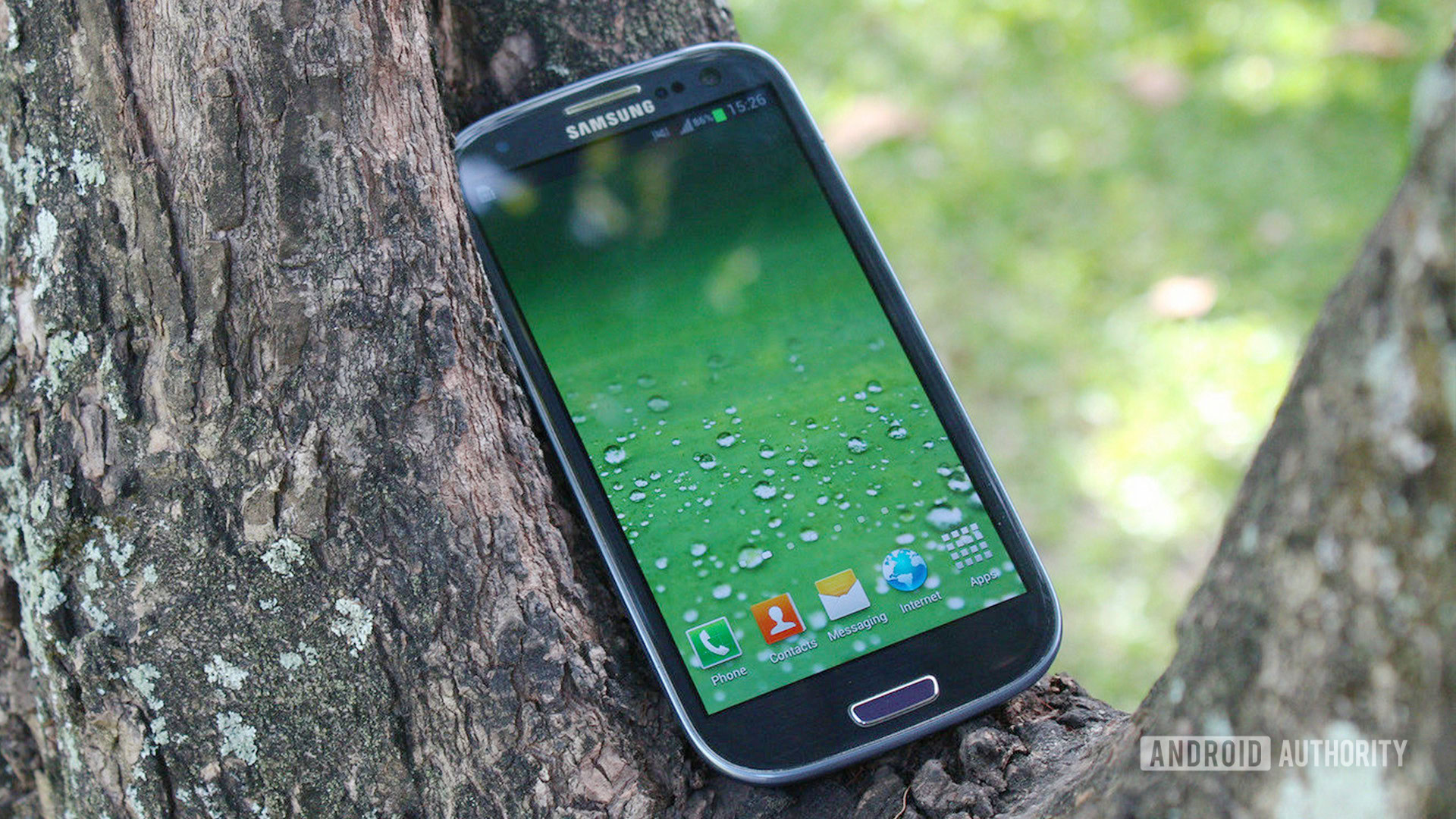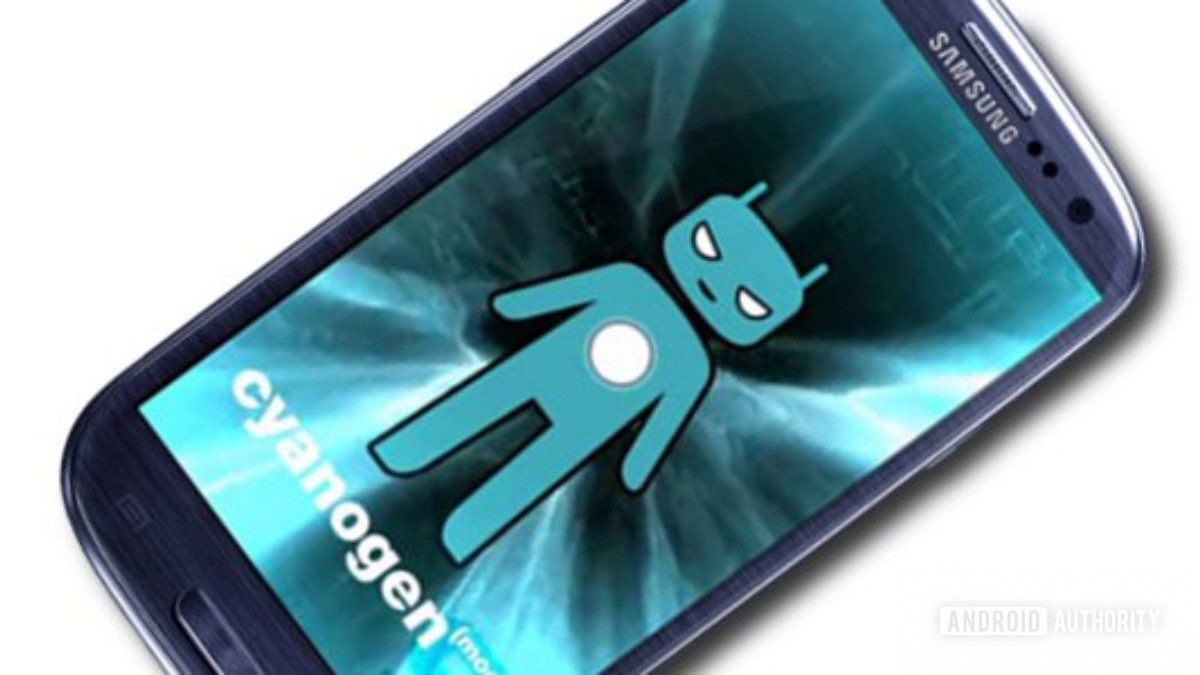Affiliate links on Android Authority may earn us a commission. Learn more.
The Samsung Galaxy S3 is 10 years old now: A tale of a different time

The year is 2012. Nokia is still on top of the smartphone world, but Apple is knocking on its door. Ice Cream Sandwich and its Holo design aesthetic have been making their (slow) way to some Android phones. The Android Market has just been rebranded to Google Play. 720p displays are hot, quad-core processors are at the bleeding edge, and a phone with a 5.3-inch display is considered a “phablet.”
The year is 2012 and Samsung is rising like a rocket in the mobile market by perfecting a strategy it established two years prior with the first Galaxy S phone. It’s building a flagship line that competes with Apple, runs Google’s platform and application store, offers the best specifications, and is available in as many countries and on as many carriers as possible like Nokia once was. After the decent success of the Galaxy S and the incredible rise of the Galaxy S2, which firmly established Samsung as a worldwide contender and not a one-hit-wonder, the Galaxy S3 had big shoes to fill when it launched on May 29, 2012. Ten whole years ago.
We ranked them: The Galaxy S series from worst to best

I still remember how controversial its smooth, rounded, pebble-like shape was — some people were still attached to the harder angles and rougher exterior of the Galaxy S2. I remember how much the tech press ragged on the nature-inspired TouchWiz and its water ripple unlock animation. I remember how much they/we/I criticized Samsung’s heavy-handed software experience, with duplicates of almost everything stock Android had. But I also remember how much I enjoyed that little puck of a phone.
I still remember how controversial its smooth, rounded, pebble-like shape was.
At the time, and after many years as a Nokia and Symbian fan, I had firmly moved into the Android ecosystem and called it my new home. I had been using and enjoying my HTCDesire Z for a year or more, but I wanted something more modern. I didn’t look far for an upgrade. My best friend owned the Samsung Galaxy S2 and had nothing but good things to say. The S3 had a bigger and higher-resolution display, a faster processor and better GPU, NFC and Bluetooth 4.0, and it was shipping with a more modern version of Android out of the box. It was nearly topping every benchmark test out there. But more importantly, I knew that rooting the S3 and installing CyanogenMod on it would be easy. So I took the plunge.
Walk down memory lane: Our original Samsung Galaxy S3 review

It was (nearly) everything I wanted from a modern smartphone, so much so that I didn’t miss the sliding QWERTY keyboard of my Desire Z. In fact, I found it liberating after a while to no longer have to pull up a full keyboard and rotate my phone to type a sentence.
For over a year, the Galaxy S3 was my main phone and I didn't find a thing I couldn't do on it.
For over a year, the Galaxy S3 was my main phone and I didn’t find a thing I couldn’t do on it. I installed apps, I chatted with my friends and family, I searched and browsed, I enjoyed movies and music. I even had some medical-oriented apps to help me answer anything — this was a time in my life when I had just opened my own pharmacy and I needed all the help for managing the financial, logistical, and scientific aspects of owning said pharmacy. The Galaxy S3 saw me through it all, and heck, it even had a 3.5mm headset plug, a microSD card slot, an LED notification light, and a removable battery to boot. That’s more than we can say about any modern flagship.
Read more: How far have we come since the Galaxy S3?
The only two aspects I could fault the Galaxy S3 for were software (but that was easily remedied by the hundreds of custom ROMs available for it) and photography. Let’s admit it, smartphone cameras weren’t Samsung’s forte at the time. And having come from the Nokia universe with its 40MP lenses, Carl ZEISS glass, and PureView technology, the measly 8MP lens on the Galaxy S3 was a big disappointment. It wasn’t just the megapixel count, it was everything about it. Resolution, clarity, noise, colors, processing — nothing was good.
Smartphone cameras weren't Samsung's forte at the time and the 8MP lens was a disappointment.
I just looked through my photo library and found fewer than 50 pictures total taken over more than a year with the S3. In comparison, I have hundreds of pics with the Nokia 808 PureView (which I owned around the same time) and hundreds with the LG G2 that I moved to after the Galaxy S3. That says a lot about how much I avoided using that camera. Thankfully, Samsung has improved quite a lot since then and is now battling it out with the best of the best when it comes to mobile photography.
Despite the camera, Samsung shipped 30 million Galaxy S3 units in less than seven months, outselling Apple’s blockbuster iPhone 4S during the third quarter of 2012. By the end of its lifecycle, the S3 had sold over 70 million units worldwide — an impressive feat. The more impressive stat, though, is that Samsung started 2012 with 14.84% of the smartphone market and ended it with 22.94% (StatCounter), showing a meteoric rise that would soon propel it to the top spot. The S3 also signaled the first time that Samsung expanded its Galaxy S line beyond the main flagship; the Galaxy S3 Mini was introduced in October of 2012 and with it came the idea of a family of devices built around one central model.
Samsung has stuck to that same formula, releasing powerful and dependable Galaxy S flagships year after year.
The Galaxy S3 was a flagship of its times, and an unassuming one at that. It didn’t look pretentious, it didn’t try to be something it wasn’t. It didn’t try to re-invent form factors or subscribe to gimmicky features. In retrospect, it’s easy to see how Samsung has stuck to that same formula, year after year releasing powerful and dependable Galaxy S flagships that could do it all, do it very well, and that generally didn’t fall for this or that trend du jour.
Continue reminiscing: Years later, the iPhone-bashing Galaxy S3 commercials still work